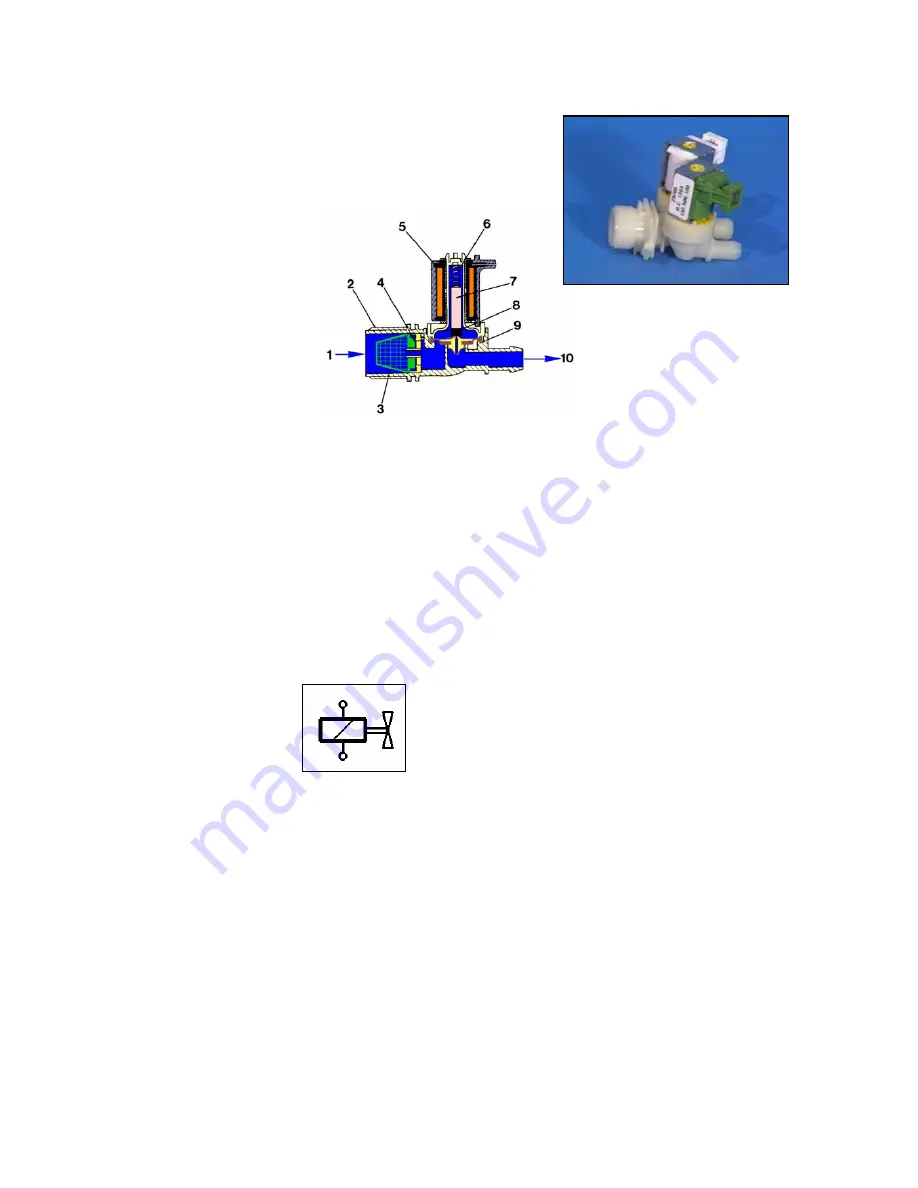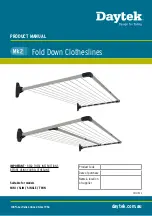
SOI/DT 2006-01 dmm
38/71
599 37 47-13
5.5 Solenoid
valve
5.5.1 General characteristics
The solenoid valve ducts water through the detergent dispenser,
and is controlled electrically by the pressure switch.
1. Water
intake
2. Solenoid
valve
body
3. Filter
4. Flow
reducer
5. Coil
6. Spring
7. Moving
core
8. Rubber
seal
9. Membrane
10. Water outlet
When at rest, the core, upon which pressure is exerted by a spring, holds the hole in the centre of the
membrane closed; as a result, the membrane hermetically closes off access to the water intake duct.
When the coil is powered, it attracts the core, which therefore opens the small hole in the centre of the
membrane, and the valve opens.
Various types of solenoid valve may be fitted:
→
solenoid valves with one inlet and one outlet
→
solenoid valves with one inlet and two or three outlets. In this case, each section of the solenoid valve is
controlled by a coil.
They have a nominal delivery of about 6.5 - 9.5 litres per minute. The water pressure must be between
3 and 100 N/cm
2.
5.5.2 Electrical
symbol
5.5.3 Checking for efficiency
WATER FILL CONTINUES WHEN THE APPLIANCE IS SWITCHED OFF:
-
Solenoid valve jammed mechanically. Replace the solenoid valve
WATER FILL CONTINUES DURING THE WASHING CYCLE:
-
Check the hydraulic circuit of the pressure switch and the pressure switch itself.
NO WATER FILL:
1. The solenoid valve vibrates (noise from the coil) but does not introduce water:
-
check the hydraulic circuit that supplies the solenoid valve (tap turned off, insufficient mains water
pressure, fill hose kinked or obstructed).
-
Solenoid valve jammed mechanically. Replace the solenoid valve
2. The solenoid valve does not vibrate:
-
Check the coil winding (3500 - 4500 ohm); if faulty, replace the solenoid valve.
-
Solenoid valve jammed mechanically. Replace the solenoid valve
-
Check the hydraulic circuit of the pressure switch and the pressure switch itself
-
Check the timer and/or the main PCB for correct operation.
















































